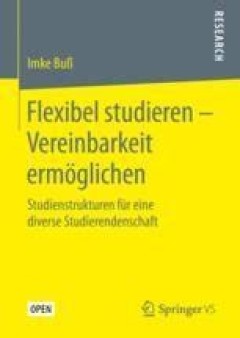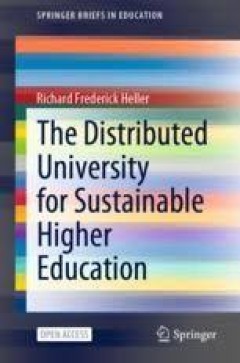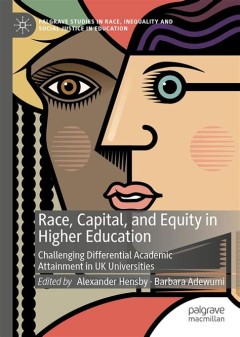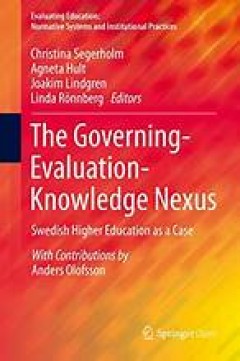Filter by

Flexibel studieren – Vereinbarkeit ermöglichen
Imke Buß weist in ihrem Open-Access-Buch nach, dass Hochschulen durch die strategische Gestaltung ihrer Studienstrukturen die Vereinbarkeit von Studium, Familie und Beruf ermöglichen können. Die Autorin entwickelt ein empirisch geprüftes Modell struktureller Studierbarkeit, welches die Bedürfnisse einer diversen Studierendenschaft berücksichtigt. Die Gemeinsamkeiten, welche Studierende mi…
- Edition
- 1
- ISBN/ISSN
- 9783658262068
- Collation
- X, 243,: ill, lamp; 21 cm
- Series Title
- -
- Call Number
- -

Indigenous Early Career Researchers in Australian Universities : Our Stories
This open access book explores the key barriers and facilitators to advancing meaningful and fulfilling academic careers in the higher education sector for Australian Indigenous doctoral graduates. It focuses on the career trajectories of Indigenous early career researchers who have participated in the Developing Indigenous Australian Early Career Researchers study, funded by the Australian Res…
- Edition
- -
- ISBN/ISSN
- 978-981-97-2823-7
- Collation
- XXVI, 127
- Series Title
- SpringerBriefs in Education (BRIEFSEDUCAT)
- Call Number
- 370 IND

Higher Degree by Research : Factors for Indigenous Student Success
This open access book provides insights from Indigenous higher degree research (HDR) students on supervision practices in an Australian context. It examines findings from qualitative studies conducted with Indigenous HDR students from different academic disciplines, enrolled higher education institutions across Australia, and supervisors of Indigenous HDR students. Six types of data and their t…
- Edition
- -
- ISBN/ISSN
- 978-981-19-5178-7
- Collation
- XV, 112
- Series Title
- SpringerBriefs in Education (BRIEFSEDUCAT)
- Call Number
- 370 AND h

The Distributed University for Sustainable Higher Education
This book is open access and discusses the re-imagining of the higher education sector. It exposes problems that relate to the way that universities have become over-managed business enterprises which may not reflect societal, national, or global educational needs. From there, it proposes some solutions, including three innovative programs, that make universities more responsive to needs, as we…
- Edition
- -
- ISBN/ISSN
- 978-981-16-6506-6
- Collation
- XII, 80
- Series Title
- SpringerBriefs in Education (BRIEFSEDUCAT)
- Call Number
- 370 HEL d

Transforming Lives and Systems : Cultural Competence and the Higher Education…
This open access book explores the transformative experiences of participants in the University of Sydney’s National Centre for Cultural Competence (NCCC) programs. The establishment of the NCCC was viewed as a critical point of departure for developing an institution-wide agenda of cultural competence. The NCCC’s work since its inception reflects efforts to lay important foundations for cu…
- Edition
- -
- ISBN/ISSN
- 978-981-15-5351-6
- Collation
- VII, 95
- Series Title
- SpringerBriefs in Education (BRIEFSEDUCAT)
- Call Number
- 370 TRA

Higher Education Landscape 2030 : A Trend Analysis Based on the AHEAD Interna…
This open access Springer Brief provides a systematic analysis of current trends and requirements in the areas of knowledge and competence in the context of the project “(A) Higher Education Digital (AHEAD)—International Horizon Scanning / Trend Analysis on Digital Higher Education.” It examines the latest developments in learning theory, didactics, and digital-education technology in con…
- Edition
- -
- ISBN/ISSN
- 978-3-030-44897-4
- Collation
- XXI, 59
- Series Title
- SpringerBriefs in Education (BRIEFSEDUCAT)
- Call Number
- 370 LUE t

Race, Capital, and Equity in Higher Education : Challenging Differential Acad…
This open access book examines the structural and cultural factors that explain the persistence of an attainment gap between white and Black, Asian, and Minority Ethnic (BAME) students in UK universities. So-called ‘deficit’ approaches have long represented the orthodoxy in higher education strategy-making, yet they overlook the structural and institutional factors that reproduce attainment…
- Edition
- 1
- ISBN/ISSN
- 9783031516177
- Collation
- XXXVI, 279 hlm; ill., lamp.,
- Series Title
- -
- Call Number
- -

25 Years of Transformations of Higher Education Systems in Post-Soviet Countries
This book is open access under a CC BY 4.0 license. This open access book is a result of the first ever study of the transformations of the higher education institutional landscape in fifteen former USSR countries after the dissolution of the Soviet Union in 1991. It explores how the single Soviet model that developed across the vast and diverse territory of the Soviet Union over several d…
- Edition
- 1
- ISBN/ISSN
- 978-3-319-52980-6
- Collation
- oer.unej.ac.id
- Series Title
- Palgrave Studies in Global Higher Education
- Call Number
- -

The Governing-Evaluation-Knowledge Nexus
This Open Access book analyses the interplay between governing, evaluation and knowledge with an empirical focus on Swedish higher education. It investigates the origins, logics, and mechanisms of evaluation and quality assurance reforms and their dynamic interactions with institutional, national and European policy contexts. The chapters report findings from extensive empirical studies that of…
- Edition
- -
- ISBN/ISSN
- 978-3-030-21142-4
- Collation
- -
- Series Title
- Evaluating Education: Normative Systems and Institutional Practices
- Call Number
- XVII, 208

Berufliche Passagen im Lebenslauf
Bridging the gap between higher education research and policy making was always a challenge, but the recent calls for more evidence-based policies have opened a window of unprecedented opportunity for researchers to bring more contributions to shaping the future of the European Higher Education Area (EHEA). Encouraged by the success of the 2011 first edition, Romania and Armenia have organised …
- Edition
- 1
- ISBN/ISSN
- 978-3-319-20877-0
- Collation
- -
- Series Title
- XLIV, 898
- Call Number
- -
 Computer Science, Information & General Works
Computer Science, Information & General Works  Philosophy & Psychology
Philosophy & Psychology  Religion
Religion  Social Sciences
Social Sciences  Language
Language  Pure Science
Pure Science  Applied Sciences
Applied Sciences  Art & Recreation
Art & Recreation  Literature
Literature  History & Geography
History & Geography